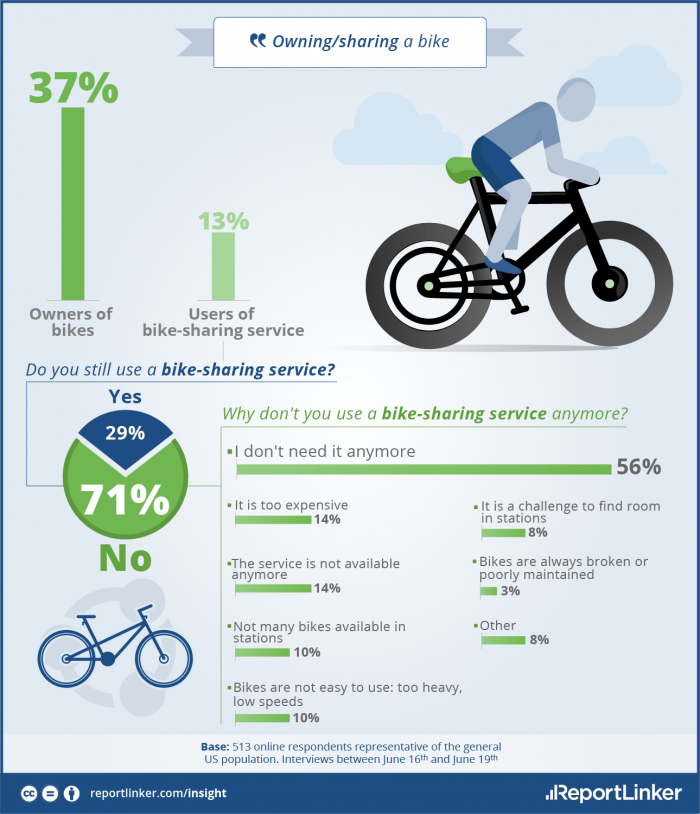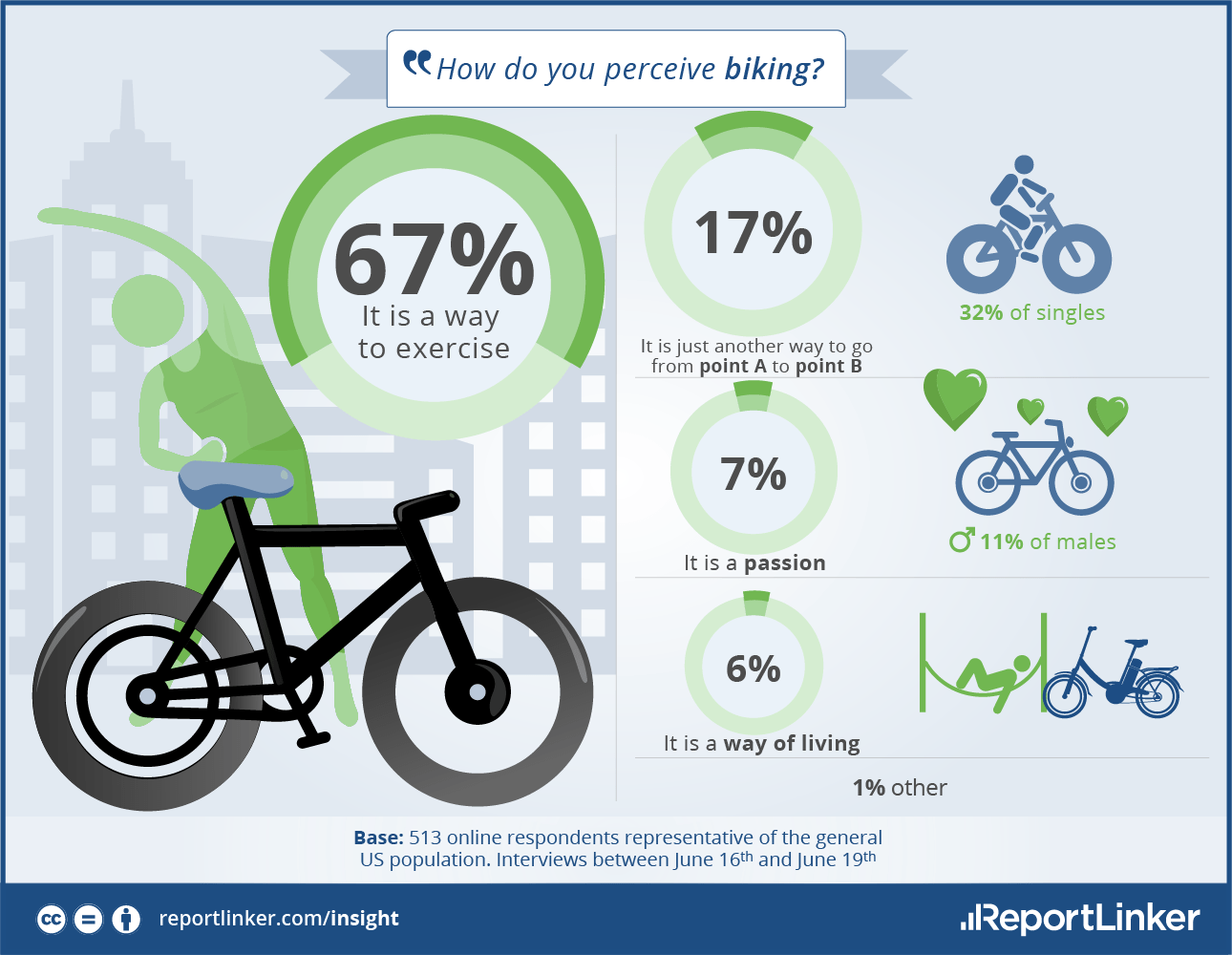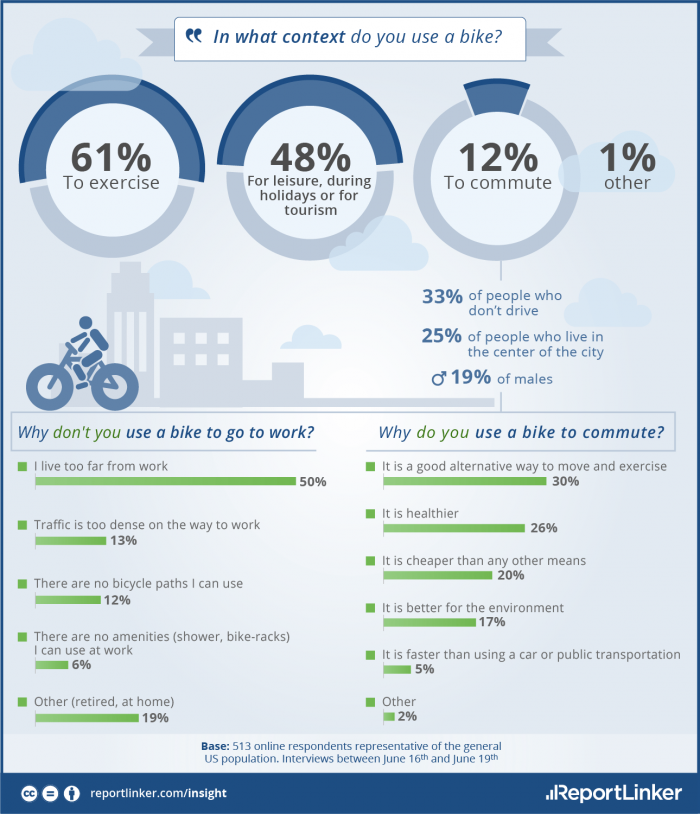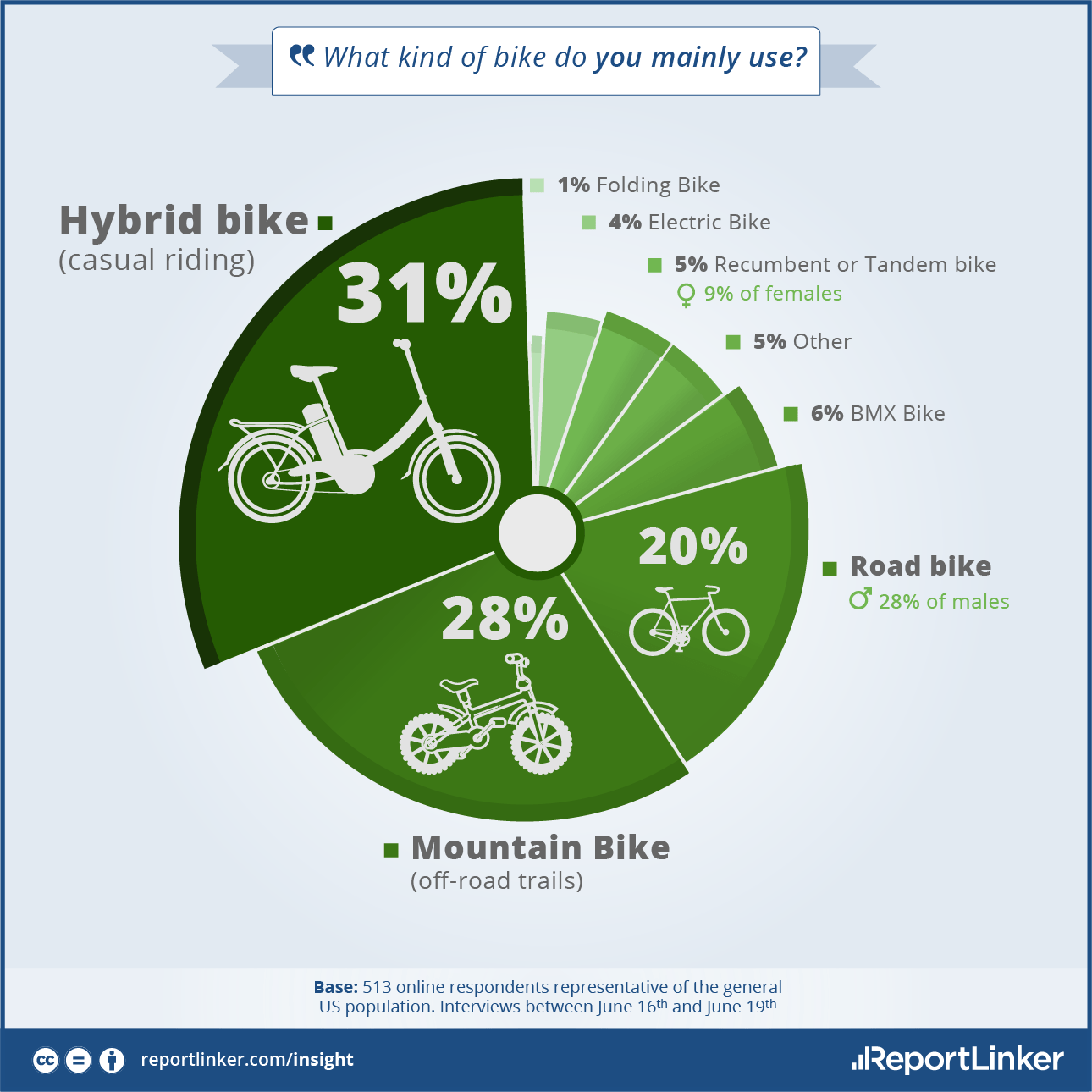There’s a mystery in the United States concerning bicycling. Specifically, bike-sharing programs and systems.
They aren’t soaring high the way that many thought or hoped they would. In fact, according to research results from ReportLinker, in the first half of June 2017, whereas well more than one-third of U.S. adults own at least one bicycle a mere 14% utilize bike-sharing services.
What’s more, 71% of those who have used a bike-sharing service no longer use it. While 56% of those who say “no” cite just no longer needing the service, there is a wide range of reasons given, from cost to low-quality bicycles to the woes of bike-docking stations not providing much room.
It’s crucial to realise here that bike-sharing businesses are centered on the concept of bicycling as a mode of transportation, of getting from A to B. However, the vast majority of Americans see bike-riding as a form of working out, getting exercise. A mere 17% of them see bicycling as an alternative mode of transportation. (Tellingly, 32% of those respondents are unmarried.) What’s more, a mere 13% cite biking as a “passion” or “way of life”, and the great majority of those saying that is male.
Indeed, 61% of U.S. respondents primarily use their bikes to get a workout, and 48% primarily use their bikes as part of leisure activities. (Clearly there’s some crossover there.) A mere 12% utilize their bicycles for work commuting, and one-third of those respondents haven’t got a driver’s licence while one-fourth of them live close to center-city, making bicycle commuting for them a far more viable option than for others living elsewhere.
As a matter of fact, among those who said that they don’t bicycle to work, one-half said that they simply live too far away from the office for commute-biking to be a viable option. Meanwhile, of those who said that they do commute to work on a bicycle at least sometimes, 56% cited biking as being a part of a healthier lifestyle and another 20% cited it as more economical than other modes of transportation. So even here, we see health concerns greatly outweighing the concept of an enjoyable alternative transportation method as the motivation for bicycling.
One clue to how bike-sharing programs in the U.S. can become stronger and more profitable is found in what American bicyclers like to ride. While one-fifth of owners have a road (or “road-racing”) bicycle, 31% of respondents own a hybrid bike and 28% own a mountain (“off-road”) bike. By designing their bicycles to mimic these two popular types, bike-sharing companies can make their service more attractive to potential customers.
When it comes to getting past the notion that bicycling is just for workouts or leisure, service providers can look to technology. For instance, the Copenhagen Wheel bike model, by Superpedestrian, makes use of “human-enhancing technology” for increasing pedaling power up to 10 times, and bikers get to set the enhancement level to make their ride anywhere from more leisurely to more of a workout.
Then there’s bicycle helmet tech. With biking helmets being mandatory by law nearly everywhere, making them tech-savvy can certainly be a way of making cycling more like modern transportation and less like a workout, conceptually. If you can take phone calls, listen to music, and use GPS while cycling from A to B, you’ll have more of the same feeling of driving a car while you get more exercise, conserve energy, take up less space, and save money using bicycling for commuting wherever feasible.
Find a Home-Based Business to Start-Up >>> Hundreds of Business Listings.





















































